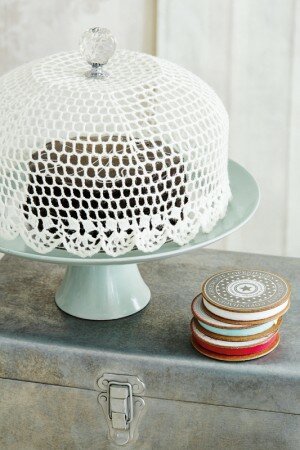-
Chair Slipcovers
Dine in decadent style with our tasteful black and white décor
October 23, 2014
You will need
- white polycotton fabric
- paper
- ruler, square, pencil and scissors
- matching thread
- stained-glass window template below (optional)
- fabric marking pen (optional)
-
cathedral window template
To Make
1 The slipcover consists of three panels: A back panel, a seat and backrest panel and a skirt panel. Measure your chair and draft a paper pattern for each of these panels. Remember to add seam and hem allowances to your paper patterns.2 The back panel is a rectangle that corresponds with the measurements of the chair. The seat and backrest panel is drafted as follows: Measure the seat area and draft the shape. Next, measure the front area of the backrest and draft the shape connected to the seat pattern. Now measure the thickness of the backrest and draft these sections along the edges of the backrest section of the pattern. You will have corners between the seat section and the side backrest sections. When sewing the slipcover, cut into the seam allowance at these corners in order to sew the side section of the skirt panel to the seat and the bottom edge of the side backrest section. Keep this in mind when drafting the skirt pattern; that is, the side width of the skirt panel will be the seat measurement plus the width of the backrest. The skirt can be drafted in three separate sections, one front and two side panels, or all three patterns can be joined into one continuous panel.
TIP If you wish to illustrate your slipcovers as we have done, you will need to do it before the panels are sewn together. You can use the stained-glass template on, or find similar line drawings on the internet, if you prefer. Copy in the desired size, trace on to the panel pieces and then go over the lines with a fabric marking pen.
3 The panels are sewn in the following order: First the skirt is sewn to the seat and backrest panel, followed by the back panel to complete the slipcover. With a one-piece skirt pattern, you will have to mark where it will join the corners of the seat section. At these points it will also be necessary to cut the seam allowance to within 2mm of the stitching line in order to sew the skirt around the corners of the seat section.
Text and image: Ideas magazine



